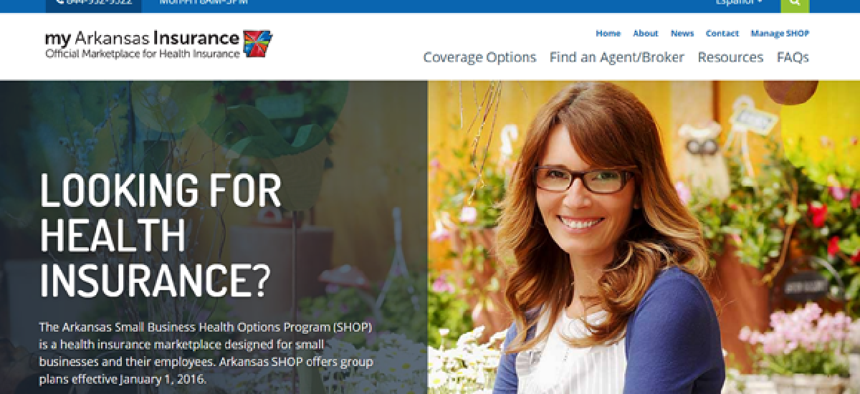As Obamacare turns 3, state exchanges mature

Back-end improvements to the state health care marketplaces are making them viable options to Healthcare.gov.
Open enrollment period for the 2016 Affordable Care Act plan year is underway. In this third season of open enrollment since the Affordable Care Act became law, health insurances marketplaces -- the technology that enables access to health coverage -- are more mature and stable. What changes have been made to improve the consumer and small business experience?
Consumer experience gets a makeover
In the public health insurance marketplaces, consumer experience in the last few years left a lot to be desired. This year, HealthCare.gov and state marketplaces alike have launched decision support tools, such as physician directories that allow consumers to look up health plans that accept their doctor. These tools can help consumers select from what often is a vast number of health plans with confusing varieties of coverage. Private exchanges or benefits marketplaces have already deployed such decision support tools with various levels of sophistication for employer groups, employees and individual consumers. With state and federal marketplaces jumping on the bandwagon, more consumers should get the assistance they need when selecting a health plan.
Selecting the right plan has a significant impact on the cost and care during the plan year not only for consumers but for health insurance carriers as well. Customer service improvements complement these decision support tools. New self-service capabilities and contact center enhancements in states like Massachusetts are aimed at better and faster assistance. Progress in all these areas should collectively improve the overall experience for consumers. In just the first two weeks of open enrollment, we have seen significantly smoother rollouts and consumer experiences.
Reconfigured renewals streamline tax credits
Each year, marketplaces must evaluate current enrollees’ continued eligibility for subsidized private coverage or Medicaid. States and the federal government have taken lessons learned during the renewals last year and used them to improve the processes. For example, marketplaces can use electronically available income tax data to update consumers’ premium subsidy amounts to ensure they are receiving the correct level of assistance – and reduce the risk of having to pay back tax credits. A well-designed and easy renewals process also helps ensure that families and individuals stay covered and that the coverage gains from last year are protected.
Transitioning between marketplaces and Medicaid
HealthCare.gov lacks the ability to serve as a “single door” for low-income residents seeking subsidized care and does not integrate properly with the various state Medicaid programs. In states with no state-based marketplaces that integrate Medicaid and marketplace eligibility determinations, issues affecting consumers who shift between Medicaid and private coverage still persist. Building state marketplaces with both eligibility determinations for consumers is the only way states can avoid issues affecting such consumers or those who have family members eligible for different programs. The “single door” approach ensures continuity of care and reduces the opportunity for fraud and abuse.
In Massachusetts, for example, the 2015 open enrollment period marked the first time consumers could use a single online system for program eligibility. The platform gave consumers the ability to complete a single online application, immediately learn what subsidized or unsubsidized program they qualify for and select and pay for a new health plan. The integrated eligibility function now allows Massachusetts to provide faster, easier and better access to coverage to over 1 million residents.
Small businesses benefit as state SHOP makes a comeback
States are seeing the merits of having their own marketplaces for small business instead of defaulting to the federal Small Business Health Options (SHOP) marketplace. This is allowing states to work closely with the brokers and small businesses in their state, deploy and run the marketplace cost effectively with off-the-shelf technology.
State SHOP is also increasingly seen as a step towards a state-based marketplace for individual consumers and long-term “single door” goals including Medicaid integration. In Arkansas, for example, the state transitioned out of the federal SHOP to launch its own state SHOP marketplace, which launched on time and on budget as the least expensive SHOP in the country. More important, the state more than doubled employer and employee enrollments to its SHOP program -- compared to the federal SHOP -- in just the first week of open enrollment.
Financial sustainability pressures persist
As a federal solution, HealthCare.gov cannot be customized or tailored to meet the unique demands, policy goals and program needs of different states. Additionally, financial sustainability of HealthCare.gov remains a big concern for states that must prepare for looming fees to run it. It is clear that the 3.5 percent assessment charged on insurance premiums purchased on HealthCare.gov is not sufficient to sustain the program. State marketplaces, however, can now partner with commercial vendors with off-the-shelf products or “lease” the technology to deploy and operate their own marketplaces at less than even the current federal fee.
Ultimately, state-based marketplaces offer the best opportunity for states to control the policy levers that matter to their residents and provide affordable and convenient access to quality healthcare while operating in a fiscally responsible manner.
NEXT STORY: Smaller cities vie to be the next silicon valley





